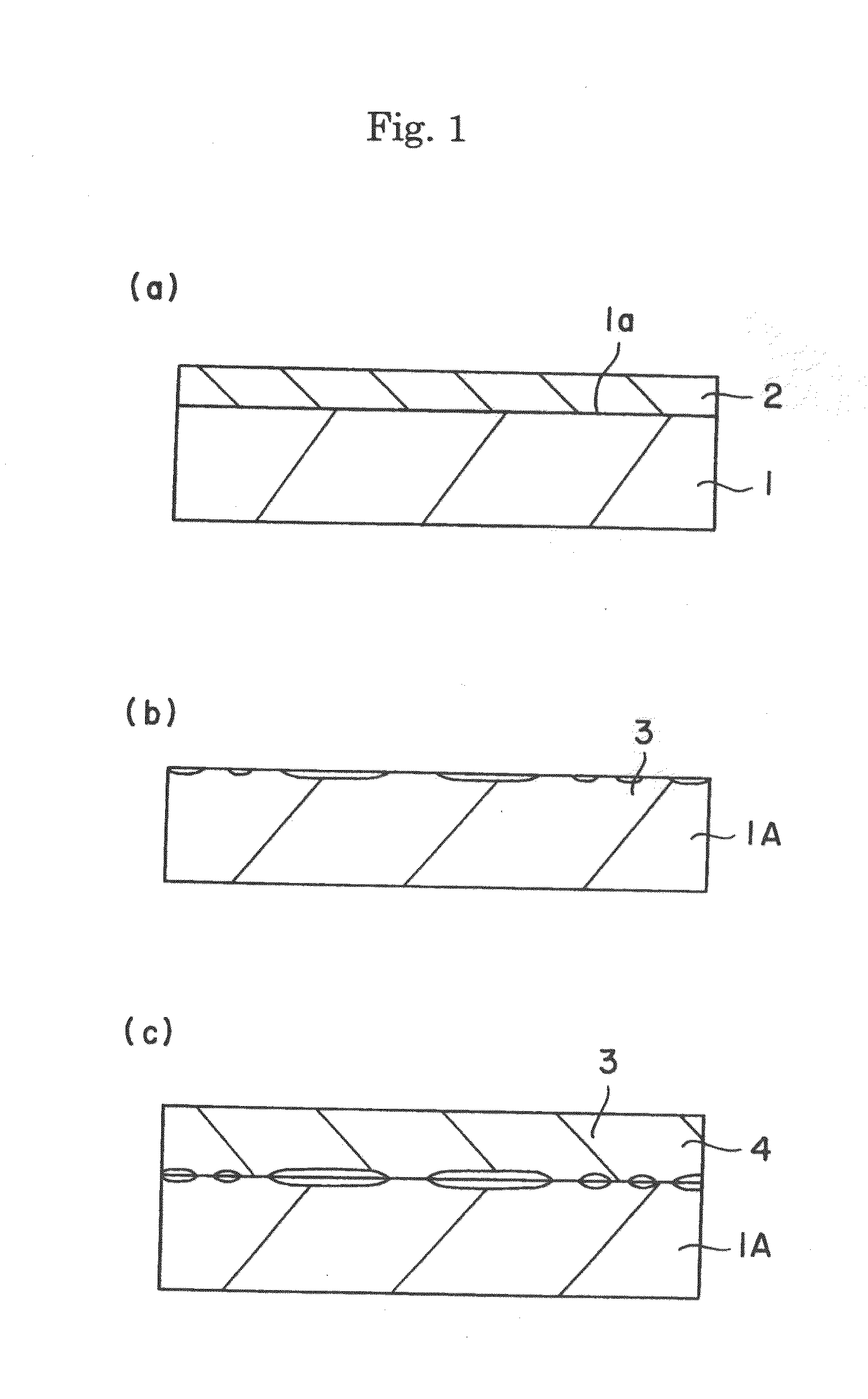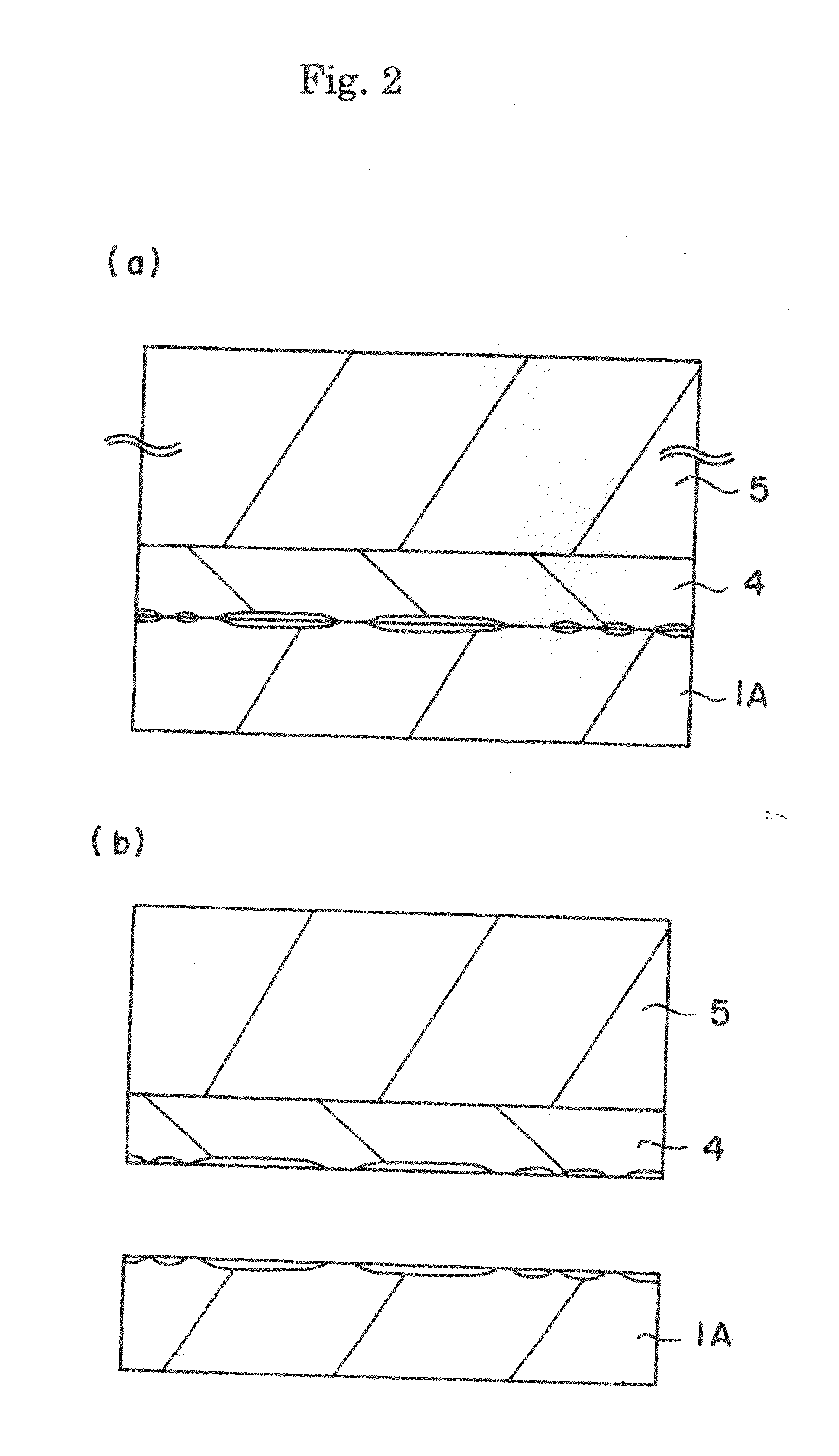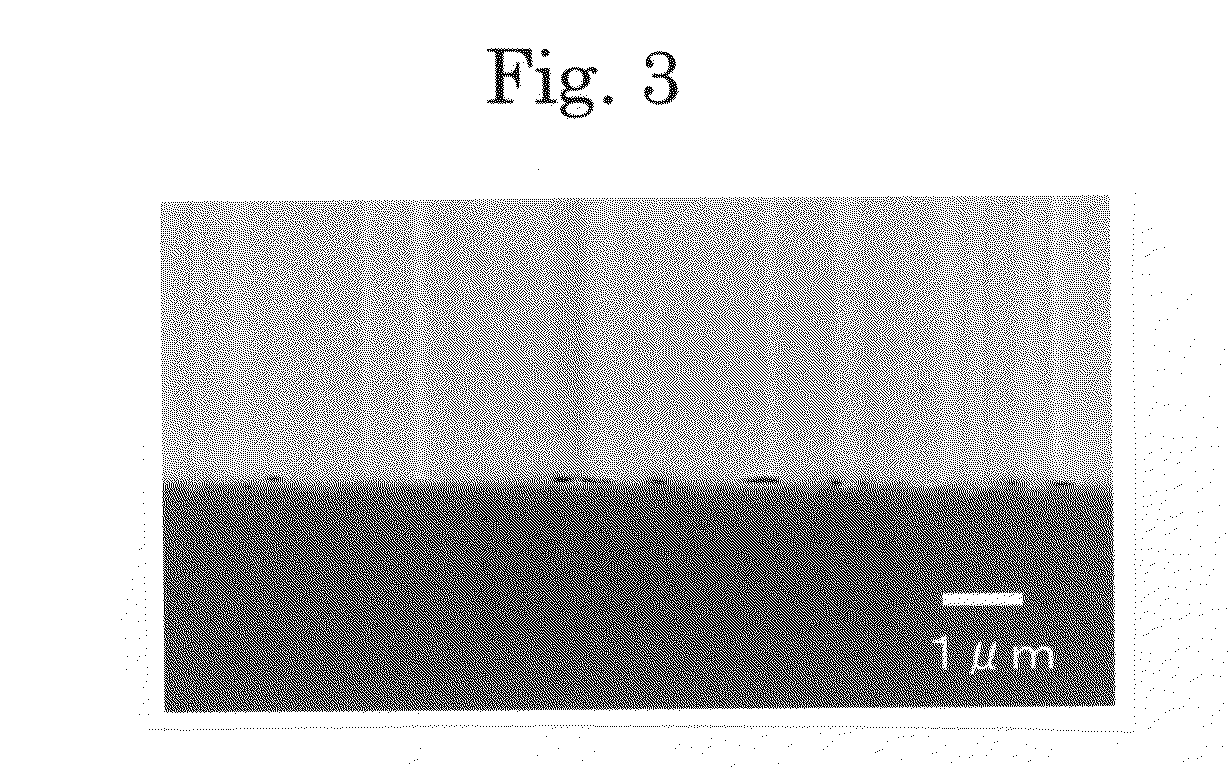Method for manufacturing group III nitride single crystals
- Summary
- Abstract
- Description
- Claims
- Application Information
AI Technical Summary
Benefits of technology
Problems solved by technology
Method used
Image
Examples
example 1
[0039]A c-plane GaN single crystal self-standing substrate was manufactured using the method described with reference to FIGS. 1 and 2.
(Manufacture of Underlying Film)
[0040]A c-plane sapphire substrate 1 with a diameter of 2 inches was put in an MOCVD furnace (metal organic chemical vapor deposition furnace), and heated at 1150° C. for 10 minutes in hydrogen atmosphere to perform the cleaning of the substrate surface. Then, the substrate temperature was reduced to 500° C., and the GaN film was grown to a thickness of 0.03 μm using TMG (trimethyl gallium) and ammonia as raw materials. Next, the substrate temperature was raised up to 1100° C., and the GaN single crystal underlying film 2 was grown to a thickness of 0.5 pm using TMG (trimethyl gallium) and ammonia as raw materials.
(In-situ Etching)
[0041]This substrate was heated again at 1150° C. for 15 minutes in hydrogen atmosphere, and the surface GaN film 2 was almost evaporated to expose the sapphire substrate 1A. It was confirmed...
example 2
[0046]An a-plane GaN single crystal self-standing substrate was manufactured using the method described with reference to FIGS. 1 and 2.
(Manufacture of Underlying Film)
[0047]An r-plane sapphire substrate 1 with a diameter of 2 inches was put in an MOCVD furnace (metal organic chemical vapor deposition furnace), and heated at 1150° C. for 10 minutes in hydrogen atmosphere to perform the cleaning of the substrate surface. Next, the substrate temperature was reduced to 500° C., and a GaN film was grown to a thickness of 0.03 μm using TMG (trimethyl gallium) and ammonia as raw materials. Next, the substrate temperature was raised up to 1100° C., and the GaN single crystal underlying film 2 was grown to a thickness of 0.5 pm using TMG (trimethyl gallium) and ammonia as raw materials.
(In-Situ Etching)
[0048]This substrate was heated again at 1150° C. for 30 minutes in hydrogen atmosphere, and the surface GaN film 2 was almost evaporated to expose the sapphire substrate 1A. It was confirmed...
example 3
[0052]An m-plane GaN single crystal self-standing substrate was manufactured using the method according to the present invention described with reference to FIGS. 1 and 2.
(Manufacture of Underlying Film)
[0053]An m-plane sapphire substrate 1 with a diameter of 2 inches was put in an MOCVD furnace (metal organic chemical vapor deposition furnace), and heated at 1150° C. for 10 minutes in hydrogen atmosphere to perform the cleaning of a substrate surface. Next, the substrate temperature was reduced to 500° C., and the GaN film was grown to a thickness of 0.03 μm using TMG (trimethyl gallium) and ammonia as raw materials. Next, the substrate temperature was raised up to 1100° C., and the GaN single crystal underlying film 2 was grown to a thickness of 0.5 pm using TMG (trimethyl gallium) and ammonia as raw materials.
(In-Situ Etching)
[0054]This substrate was heated again at 1150° C. for 30 minutes in hydrogen atmosphere, and the surface GaN film 2 was almost evaporated to expose the sapp...
PUM
 Login to View More
Login to View More Abstract
Description
Claims
Application Information
 Login to View More
Login to View More - R&D
- Intellectual Property
- Life Sciences
- Materials
- Tech Scout
- Unparalleled Data Quality
- Higher Quality Content
- 60% Fewer Hallucinations
Browse by: Latest US Patents, China's latest patents, Technical Efficacy Thesaurus, Application Domain, Technology Topic, Popular Technical Reports.
© 2025 PatSnap. All rights reserved.Legal|Privacy policy|Modern Slavery Act Transparency Statement|Sitemap|About US| Contact US: help@patsnap.com



